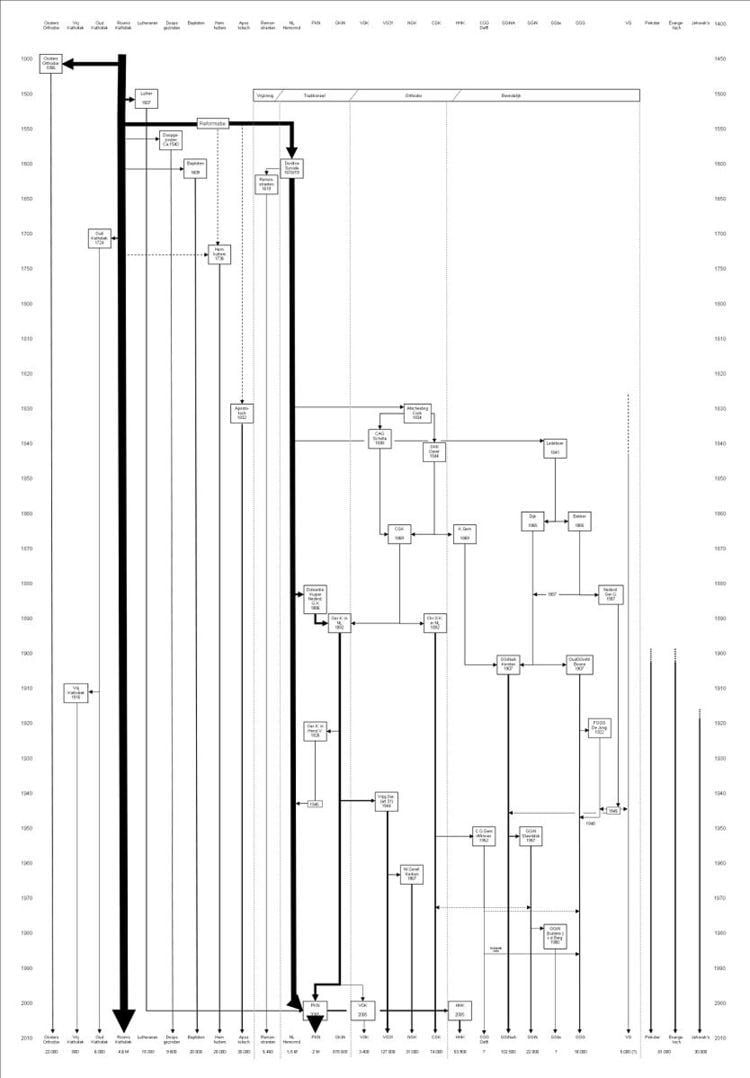Classification Protestant Polity Presbyterian Origin 1892 | Orientation Reformed | |
 | ||
Separated from Dutch Reformed Church (Dutch Nederlands Hervormde Kerk) | ||
The Reformed Churches in the Netherlands (Dutch: Gereformeerde Kerken in Nederland, abbreviated Gereformeerde kerk) was the second largest Protestant church in the Netherlands and one of the two major Reformed denominations along with the Dutch Reformed Church since 1892 until being merged into the Protestant Church in the Netherlands in 2004.
Contents
History
The Reformed Churches in the Netherlands was founded in 1892 in a merger of two groups that had split off from the Dutch Reformed Church (Nederlandse Hervormde Kerk):
The other part of the CGKN that stayed out of this union remains independent; it was renamed to "Christian Reformed Churches" in 1947.
Abraham Kuyper was the most important leader of the movement, and under his leadership the gereformeerden became a separate so-called "pillar" in Dutch society, next to the hervormden and the Roman Catholics. Part of the gereformeerde pillar were for example the Vrije Universiteit and the Anti Revolutionary Party, a political party now part of the Christian Democratic Appeal.
Since its founding in 1892, two groups have separated from the GKN (Gereformeerde Kerk Nederland). The first split was in 1926, over a conflict about the literal interpretation of the Bible. The orthodox majority of the church concluded from the story of Adam and Eve that the serpent had been given the power of speech. The members of the more liberal wing of the church viewed the story as an allegory. After the Synod of Assen concluded that the story was a report on a factual and observable reality, the dissenters formed the Gereformeerde Kerken in Hersteld Verband. In 1971/1972, the GKN retracted the conclusion of the Synod of 1926.
The second schism, called the Vrijmaking ("Liberation", that is: from synodal authority), occurred in 1944, when the Reformed Churches in the Netherlands (Liberated) (Gereformeerde Kerken vrijgemaakt) split off from the Reformed Churches in the Netherlands.
The long process of reuniting with the Dutch Reformed Church began in 1962 and ended on May 1, 2004, when the GKN, the NHK and the Evangelical Lutheran Church merged to form the Protestant Church in the Netherlands. At that time, the Reformed Churches in the Netherlands had around 675,000 members, 400,000 of whom were churchgoers. There were 857 congregations, with some 1,000 church buildings.
Seven congregations did not agree with the merger and founded the Continued Reformed Churches in the Netherlands (voortgezette Gereformeerde Kerken in Nederland) on May 8, 2004.
Theology
Until World War II, the Gereformeerde Kerk was characterized by a classical neo-Calvinist belief. The church thought of itself as the most true church of Christ. The main influence on the theological views was from Abraham Kuyper and Herman Bavinck. After World War II, the character of the church changed. After 1962, the church became an open church, with space and freedom for various beliefs. Modern theologians in the gereformeerde church are Gerrit Cornelis Berkouwer (1903-1996) and Harry M. Kuitert (born 1924).
